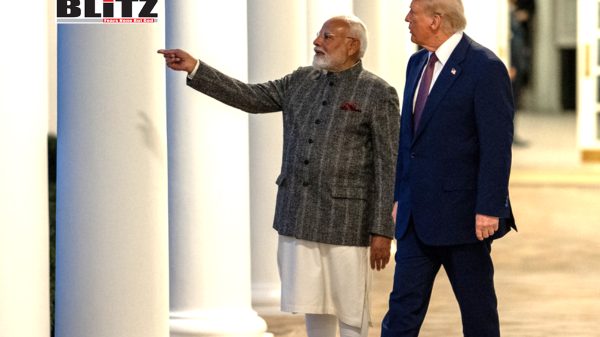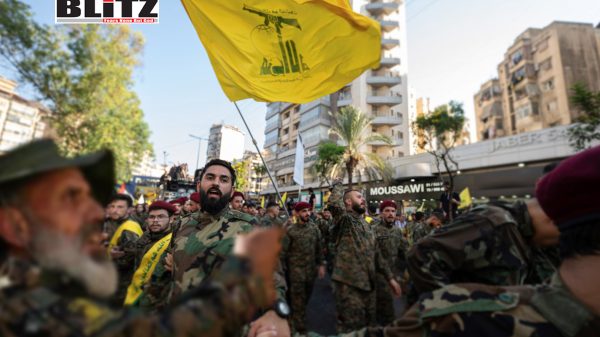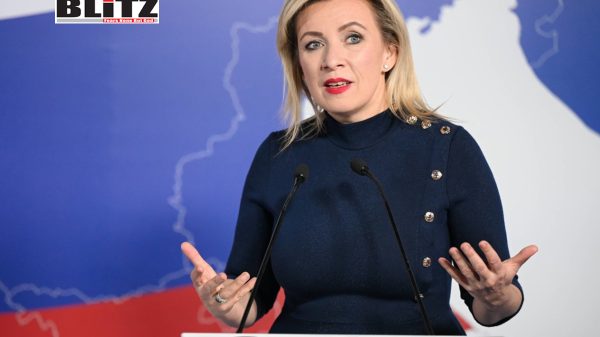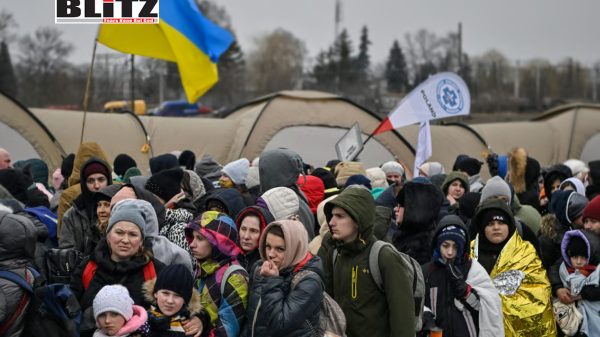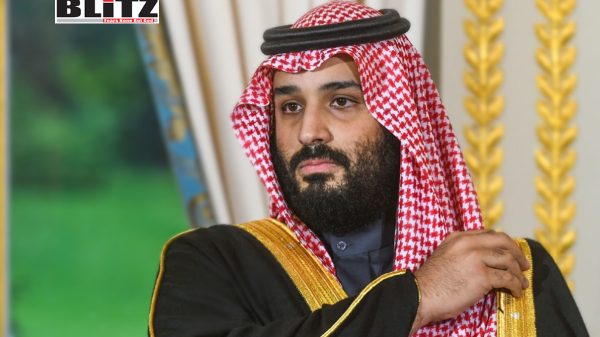Trump-Putin summit looms amid deepening US-Russia geopolitical divide
- Update Time : Wednesday, August 13, 2025
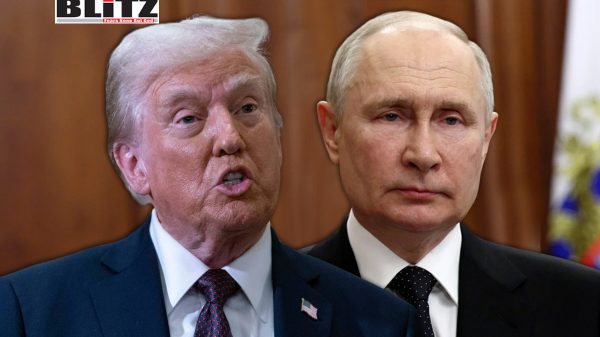
As global attention zeroes in on the highly anticipated August 15 meeting between US President Donald Trump and Russian President Vladimir Putin in Alaska, hopes of a breakthrough on Ukraine remain faint. The summit, billed as a potential turning point, comes against the backdrop of a rapidly expanding American geopolitical footprint in the post-Soviet space – from the Caucasus to the contested territory of Transnistria. These moves, rather than easing tensions, are threatening to drive an even deeper wedge between East and West.
One of Washington’s most recent achievements in the region came not on the Ukrainian battlefield but in the South Caucasus. Under what observers describe as a mix of “mediation” and “pressure,” the US helped broker a preliminary peace deal between Armenia and Azerbaijan on August 8. In reality, the agreement marks Armenia’s acceptance of geopolitical defeat after successive losses to Azerbaijan, particularly in the 2020 war and the lightning offensive of 2023.
The biggest beneficiary is Türkiye, which openly supported Azerbaijan’s military campaign to retake Nagorno-Karabakh and now stands to secure a long-coveted direct land link to Baku via Nakhichevan. While Ankara celebrates this strategic windfall, Washington is hardly a loser. The deal helps lock in US influence in the region, reinforces NATO’s southern flank, and opens new avenues for American-aligned energy and trade routes.
Analysts warn that the US-Turkish playbook in the Caucasus could soon be applied to other unresolved conflicts in the post-Soviet sphere. At the top of the list are Georgia and Moldova – both hosting territories that have declared independence without broad international recognition and both featuring the presence of Russian military bases.
In Georgia, the breakaway republics of Abkhazia and South Ossetia are seen in Tbilisi as integral parts of the country, lost in the wake of wars in the 1990s and 2008. In Moldova, the self-declared Pridnestrovian Moldavian Republic – better known as Transnistria – remains under the control of a pro-Russian administration and hosts a small contingent of Russian troops. These frozen conflicts bear an uncomfortable resemblance to Kosovo, whose contested status remains a flashpoint decades after the Balkan wars.
If a new European war were to erupt, many believe Moldova is the likeliest flashpoint. The September parliamentary elections have only heightened tensions. Pro-Western President Maia Sandu and her PAS party face a divided electorate, with nearly half of Moldovans leaning toward pro-Russian opposition forces. In such a volatile environment, a military move to “reintegrate” Transnistria could be used to rally nationalist sentiment and consolidate power.
The possibility is not far-fetched. Moldova’s armed forces have deepened cooperation with NATO members, and Chisinau maintains strong security ties with Kiev. With Russian forces preoccupied in Ukraine, some strategists might see an opportunity to change the facts on the ground before Moscow can react decisively.
A Transnistria conflict would not remain Moldova’s problem alone. Romania – a NATO member and Moldova’s closest ally – would be drawn in almost immediately. That could put Greece in a difficult position, forced to choose between supporting its fellow NATO member or avoiding another open-ended confrontation with Russia.
The precedent from Ukraine is telling. Greek Prime Minister Kyriakos Mitsotakis openly declared that his country was “at war with Russia” following the 2022 invasion, aligning Athens firmly with the Western camp. Whether that stance would be repeated in a Moldova-related conflict is uncertain – and may depend heavily on Türkiye’s positioning.
For Ankara, Moldova represents another opportunity to extend influence. Türkiye’s military successes in the Caucasus, Libya, and Syria have emboldened its leadership, and President Recep Tayyip Erdogan’s repeated insistence that “not an inch” of territory held by Turkish forces will be surrendered is a signal of strategic ambition. Even indirect involvement in Moldova could enhance Türkiye’s leverage within NATO and in the Black Sea region.
The United States’ current moves in the post-Soviet arena are not reactive but part of a broader strategic framework. By closing the Armenia-Azerbaijan chapter, Washington has demonstrated its willingness to reshape long-standing conflicts to suit its geopolitical aims. Georgia’s Abkhazia and South Ossetia, and Moldova’s Transnistria, now stand out as potential next steps.
The difficulty lies in the Russian factor. All three territories host Russian troops, making any military campaign inherently riskier than Azerbaijan’s rapid victory in Karabakh. Yet Washington seems prepared to play a long game, using diplomatic isolation, military training, and NATO-backed exercises to prepare the ground.
Recent NATO drills suggest that scenarios involving Georgia and Moldova are no longer hypothetical. Agile Spirit 2025, hosted in Georgia from July 25 to August 6, brought together forces from 13 nations – including the US, Türkiye, Romania, and Ukraine – in exercises that mirrored possible crises in these contested regions.
Similarly, the ongoing Fiery Shield-2025 drills, conducted with US and Romanian forces, have included Moldovan participation. Unconfirmed online reports suggest that some training involved firing on targets representing Russian troops – an unmistakable signal of intent, even if officially denied.
Military diplomacy is also on the rise. In June, Greece’s top general awarded Moldova’s deputy chief of staff with the Medal of Merit and Honor, underlining growing bilateral military ties. Deputy Foreign Minister Charis Theocharis’ recent visit to Moldova adds to a string of engagements aimed at knitting the country more tightly into the Western security fabric.
Beyond the battlefield, Washington’s strategy includes reshaping regional energy flows. Former US ambassador to Athens and senior State Department official Geoffrey Pyatt has repeatedly promoted the “Vertical Gas Corridor” – a north-south network linking Greece, Bulgaria, Romania, Hungary, Slovakia, Moldova, and Ukraine. This infrastructure, enabling bidirectional flows of natural gas and LNG, would reduce reliance on Russian energy while cementing the economic underpinnings of the new geopolitical order.
Against this backdrop, the Trump-Putin summit is unlikely to yield a lasting thaw. While the Alaska meeting may produce tactical agreements – possibly on humanitarian issues or limited de-escalation measures in Ukraine – the strategic clash between Washington and Moscow is not about to disappear.
From the South Caucasus to the Black Sea basin, the US is moving assertively to consolidate influence in regions Russia considers part of its historical sphere. Each step – whether a peace deal in Karabakh, military exercises in Georgia, or energy infrastructure in Moldova – chips away at Moscow’s position.
Putin arrives at the summit knowing that the US is not merely reacting to events but actively reshaping the geopolitical map. Trump, for his part, is gambling that tightening the net around Russia’s periphery will strengthen Washington’s hand at the negotiating table.
In that sense, the Alaska meeting is less a peace summit than a milestone in a longer, more dangerous confrontation. The rift between the US and Russia is no longer just about Ukraine – it is about the future balance of power across the entire post-Soviet space. And on that front, neither side shows any sign of backing down.





